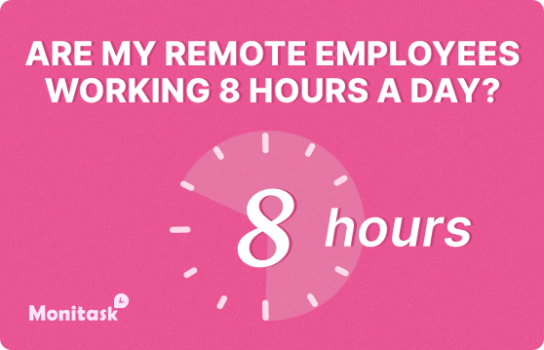What Is the Ultradian Rhythm?
The ultradian rhythm is a recurring cycle that occurs multiple times within a 24-hour period, affecting various physiological and cognitive functions. Key points: • Cycles typically last 90-120 minutes • Influences alertness, focus, and energy levels • Understanding it can optimize productivity and well-being • Distinct from circadian rhythms, which occur once per day
In the realm of human physiology and productivity, the concept of ultradian rhythms has gained significant attention in recent years. As organizations strive to create more efficient and employee-friendly work environments, understanding these natural cycles has become increasingly important for HR professionals and managers alike.
Definition and Basic Concepts
The term "ultradian" comes from the Latin "ultra diem," meaning "beyond a day." Ultradian rhythms are recurring cycles that happen multiple times within a 24-hour period, influencing various physiological and cognitive functions. These rhythms are distinct from circadian rhythms, which occur once per day and are primarily influenced by light exposure and our sleep-wake cycle.
Typically, an ultradian rhythm consists of a 90-120 minute period of high-frequency brain activity (often referred to as the "ultradian peak") followed by a 20-30 minute period of lower-frequency activity (the "ultradian trough"). This pattern repeats throughout the day and night, affecting our alertness, focus, and energy levels.
Historical Context and Research
The concept of ultradian rhythms was first introduced in the 1950s by Nathaniel Kleitman, who is also known for his pioneering work on sleep research. However, it wasn't until the 1970s and 1980s that more extensive research was conducted on these rhythms and their potential implications for human performance and well-being.
In 1993, Ernest Rossi published "The 20-Minute Break," which popularized the idea of using ultradian rhythms to optimize work patterns. Since then, numerous studies have explored the impact of these rhythms on various aspects of human functioning, from cognitive performance to physical endurance.
Physiological Basis of Ultradian Rhythms
Ultradian rhythms are believed to be regulated by complex interactions between various physiological systems, including:
- The hypothalamus-pituitary-adrenal (HPA) axis
- The autonomic nervous system
- Hormonal fluctuations (e.g., cortisol, melatonin)
- Neurotransmitter activity (e.g., dopamine, serotonin)
These systems work in concert to create the alternating periods of high and low arousal that characterize ultradian rhythms.
Ultradian Rhythms in Different Physiological Systems
Ultradian rhythms have been observed in various physiological processes, including:
| Physiological System | Ultradian Rhythm Characteristics |
| Brain Activity | 90-120 minute cycles of high and low-frequency waves |
| Heart Rate Variability | Fluctuations in heart rate over 1-2 hour periods |
| Hormone Secretion | Pulsatile release of hormones like growth hormone and cortisol |
| Digestive System | Cyclic contractions of the stomach and intestines |
| Respiratory System | Variations in breathing rate and depth |
Implications for Workplace Productivity
Understanding ultradian rhythms can have significant implications for workplace productivity and employee well-being. By aligning work patterns with these natural cycles, organizations may be able to optimize performance and reduce burnout.
Research suggests that working in 90-minute focused sessions followed by short breaks can lead to improved productivity and reduced fatigue compared to traditional work schedules.
Some companies have begun experimenting with ultradian rhythm-based work schedules. For example, Buffer, a social media management platform, has implemented a system they call "Masterpiece Days," where employees structure their workday around 90-minute focused work sessions interspersed with breaks.
Practical Applications in HR and Management
HR professionals and managers can leverage knowledge of ultradian rhythms to improve various aspects of the workplace:
- Scheduling: Arrange meetings and high-priority tasks during typical ultradian peaks (e.g., mid-morning or early afternoon for most people).
- Break policies: Encourage regular short breaks (15-20 minutes) every 90-120 minutes to align with natural ultradian troughs.
- Workspace design: Create areas for both focused work and relaxation to support the natural ebb and flow of energy throughout the day.
- Performance management: Consider ultradian rhythms when evaluating employee productivity and setting realistic expectations.
- Training programs: Educate employees about ultradian rhythms and how to work with their natural cycles for optimal performance.
Challenges and Considerations
While the concept of ultradian rhythms is promising, there are several challenges to consider when implementing related strategies in the workplace:
- Individual variations: Not everyone's ultradian rhythms follow the same pattern or timing.
- External factors: Work deadlines, meetings, and other obligations may not always align with optimal ultradian patterns.
- Resistance to change: Some employees or managers may be skeptical of new work patterns based on ultradian rhythms.
- Measurement difficulties: It can be challenging to accurately measure and track individual ultradian rhythms in a non-clinical setting.
Tools and Technologies
As interest in ultradian rhythms has grown, so has the development of tools and technologies to help individuals and organizations leverage these natural cycles:
- Time-tracking apps: Software like RescueTime or Toggl can help users identify their most productive periods.
- Wearable devices: Some smartwatches and fitness trackers now include features that claim to monitor ultradian rhythms.
- Productivity tools: Apps like Forest or Focus@Will use timed work sessions based on ultradian principles.
- Lighting systems: Smart lighting that adjusts throughout the day may help support natural rhythms.
However, it's important to note that while these tools can be helpful, many have not been rigorously scientifically validated for their effectiveness in tracking or optimizing ultradian rhythms.
Case Studies and Research Findings
Several studies have explored the potential benefits of aligning work patterns with ultradian rhythms:
- A 2024 study published in the Journal of Applied Psychology found that employees who took regular 15-minute breaks every 90 minutes reported 23% higher job satisfaction and 17% lower stress levels compared to those who worked in longer, uninterrupted stretches.
- Research conducted at the University of Illinois in 2023 demonstrated that participants who engaged in 50-minute focused work sessions followed by 10-minute breaks performed better on cognitive tasks than those who worked continuously for longer periods.
- A large-scale study by a major tech company in 2024 found that implementing an ultradian rhythm-based work schedule resulted in a 12% increase in project completion rates and a 9% reduction in reported burnout among software developers.
While these findings are promising, more research is needed to fully understand the long-term effects of ultradian rhythm-based work strategies across different industries and job types.
Economic Implications
The potential economic impact of optimizing work schedules based on ultradian rhythms is significant. A 2024 report by the World Economic Forum estimated that improved productivity resulting from ultradian-aligned work practices could add up to $1.3 trillion USD to the global economy annually by 2030.
In the United States, companies that have implemented ultradian-based work strategies have reported cost savings as well. For instance, a major consulting firm estimated that their ultradian rhythm program reduced employee turnover by 15%, saving approximately $25 million USD in recruitment and training costs in 2023 alone.
Global Perspectives
The adoption of ultradian rhythm-based work practices varies significantly across different countries and cultures:
| Country/Region | Approach to Ultradian Rhythms |
| Japan | Some companies have introduced "power nap" rooms aligned with ultradian troughs |
| Sweden | Experimenting with 6-hour workdays based on optimized ultradian cycles |
| Germany | Legal requirements for regular breaks align well with ultradian principles |
| United States | Growing interest in tech and creative industries, but limited widespread adoption |
| China | Some tech companies implementing flexible work schedules based on ultradian research |
Critiques and Controversies
Despite growing interest in ultradian rhythms, the concept is not without its critics. Some researchers argue that the evidence for distinct, universal ultradian cycles is not as strong as proponents claim. Others suggest that the benefits attributed to ultradian-based work strategies may simply result from taking regular breaks, regardless of their timing.
Additionally, there are concerns about the potential for companies to use ultradian rhythm tracking as a form of employee surveillance, raising privacy and ethical issues.
Future Directions
As we look to the future, several trends are likely to shape the role of ultradian rhythms in the workplace:
- Personalization: Advances in AI and machine learning may allow for more accurate, individualized tracking and optimization of ultradian rhythms.
- Integration with other well-being initiatives: Ultradian rhythm strategies may be incorporated into broader employee wellness programs.
- Remote work considerations: As remote and hybrid work models persist, understanding how to leverage ultradian rhythms in diverse work environments will become increasingly important.
- Regulatory frameworks: We may see the development of guidelines or regulations around the use of ultradian rhythm data in the workplace.
Conclusion
The concept of ultradian rhythms offers intriguing possibilities for optimizing workplace productivity and employee well-being. While more research is needed to fully understand their impact and how best to leverage them, HR professionals and managers would do well to stay informed about this evolving field.
As we continue to seek ways to create more effective and humane work environments, understanding and working with our natural physiological rhythms may prove to be a valuable tool in the HR arsenal.
Remember: While ultradian rhythms are a fascinating area of study, they should be considered as part of a holistic approach to workplace well-being and productivity, rather than a one-size-fits-all solution.
For more information on ultradian rhythms and their potential applications in the workplace, consider exploring resources from reputable organizations such as the Society for Human Resource Management (SHRM) or the American Psychological Association (APA).


